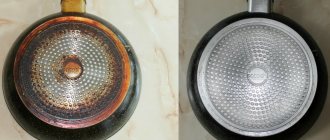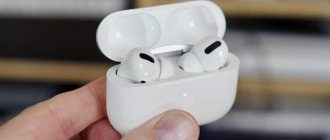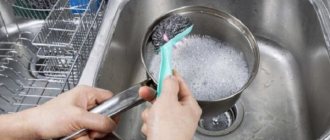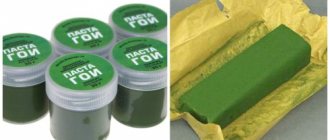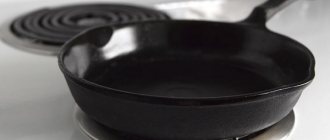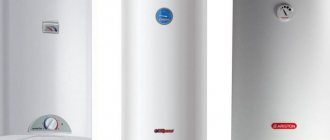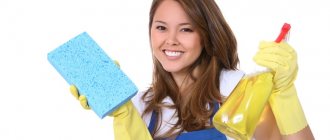A samovar is a water heater that belongs to ancient traditions that our ancestors maintained. It is also found in the homes of modern people. The advantage of the device is its ability to maintain water temperature for a long time, which is absent in other conventional kettles. Due to the widespread use, the question of how to clean a samovar is relevant for many people. It is relatively easy to clean it from plaque and other contaminants, and this can be done with improvised means.
Cleaning the brass surface
A brass samovar is cleaned with ammonia or oxalic acid.
Ammonia
Using ammonia for cleaning a regular and electric samovar:
- lightly moisten the cloth with ammonia;
- wipe the surface;
- rinse.
Oxalic acid
When working with oxalic acid, use gloves:
- stir oxalic acid in water according to the instructions (usually 100 g/3 l);
- moisten the surface of the device with liquid for 5 minutes;
- wash away;
- clean with soda;
- rinse;
- Rub the samovar until shiny with a soft cloth.
Cleaning small parts
Small parts of the samovar can be cleaned by boiling them for 30 minutes in a solution of water and soda ash (½ l:20 g).
How to prevent scale from appearing
If a white coating constantly appears in your samovar, it means the water is too hard. It contains a lot of mineral salts, and believe me, this is not “Essentuki” at all. If you drink such water constantly, your teeth will deteriorate and problems with your stomach, liver and kidneys will begin. To prevent this from happening:
- Buy clean bottled water.
- Install a quality water filter.
Inexpensive models remove only mechanical contaminants: fine suspension, rust, tiny particles of debris. But you need a softening filter or reverse osmosis filter. Such models are more expensive and more difficult to install.
Cleaning stainless steel surfaces
Stainless steel cookware loses its luster over time, becomes dull, and becomes stained. There are several options for cleaning a stainless steel samovar. The most commonly used are Goya paste and vinegar, available in every home.
Vinegar
Using vinegar is very simple:
- moisten a cotton pad or swab with 9% vinegar;
- wipe the surface.
Paste GOI
In addition to stainless steel, Goya paste can be used to clean copper samovars and brass products. It can not only clean, but also add shine:
- put a little paste on a soft cloth;
- clean the product;
- Remove residues with alcohol.
Important! Apply the paste gradually - after cleaning one area, apply it to another area.
How to polish a samovar
Harsh abrasives should not be used. They will leave noticeable scratches on a smooth metal surface.
To polish a samovar, use:
- GOI paste. This product is sold in hardware stores. Apply the paste to a soft cloth and gently rub the surface with gentle movements until it shines. Then rinse and wipe with a cloth.
- A mixture of tooth powder and 10% ammonia. Make a paste, apply a little to the surface and rub lightly with a cloth. To remove the composition, simply wipe the samovar with a damp cloth.
- Special products for polishing non-ferrous metals. They are sold in auto stores. Apply the product according to the instructions, wipe with a cloth - and the samovar will shine like new. But don't forget to wash the container thoroughly. Remember: these products are not intended for dishes, but for cars.
- Powdered chalk. The softest and most ineffective way. It is used for very sensitive but not contaminated surfaces.
Some dull areas can be polished with toothpaste. Choose not bleaching, but the most common toothpastes - they do not contain abrasives.
Internal cleaning
After cleaning the outer surface, you should remove the scale in the samovar, which can significantly distort the taste of the prepared drinks. You can clean the inside of the samovar using the following means.
Sweet sodas
The first option on how to clean the inside of a samovar is to use sweet sodas (for example, Sprite, Coca-Cola, etc.):
- pour soda into the samovar;
- leave overnight;
- pour out;
- clean off dirt with a brush;
- rinse.
Potato peelings
Using potato peelings is an old way to remove scale:
- rinse cleaning;
- pour them into the samovar;
- fill with water;
- boil for 30 minutes;
- leave to act for 2–3 hours;
- throw away the cleaning;
- rinse;
- Clean any remaining dirt with baking soda;
- rinse.
Cleaning the inside, done with scrubbing and baking soda, should be followed by boiling the water again to complete the process.
Tinning a samovar at home
If you are restoring an antique samovar to boil water in it, be sure to look inside. Do you see a dark film inside that covers the surface of the metal? These are harmful oxides. They need to be removed.
To do this, the samovar is tinned - that is, covered with a protective film of tin. It's easy to do:
- Polish the inner bowl with fine sandpaper and rinse thoroughly.
- Rub the inside of the samovar with soldering acid or ammonia.
- Place the bowl on the fire and melt some soldering tin there. Choose pure metal without impurities.
- Shake the container, distributing the liquid metal along the walls. You can “smear” it with flax fiber, but be careful - the temperature of straightened tin exceeds 230 °C.
- Repeat the procedure until the inner bowl of the samovar is covered with a layer of metal of the same thickness.
In the same way, you can tin any internal surface of the samovar that comes into contact with water.
Household products
Household products are also used to clean samovars. The most popular are:
- liquid laundry soap;
- dishwashing detergents;
- soda solution;
- solid laundry soap;
- dishwashing powders.
Some types of samovars cannot be cleaned with abrasives. These include dishwashing powders and baking soda. What materials cannot be cleaned with abrasive particles are described in the sections above.
You can use laundry soap to clean external dirt such as grease stains or food stains. In this case, liquid laundry soap is applied in a thin layer, and a sponge is soaped with solid soap, which is used to treat the surface. Contaminants should be cleaned using hot water or even boiling water - this way they will come off better. Remaining soap should be rinsed off thoroughly.
It is not recommended to clean internal surfaces with laundry soap. They will not be able to remove scale on the walls or heating element. In addition, the smell of soap is difficult to dissipate.
Dishwashing detergents are used in the same way as liquid laundry soap. They are considered the best for cleaning stainless steel samovars. The stainless steel device can be cleaned with dishwashing detergent both outside and inside. It is advisable to choose products that are odorless. Otherwise, it is necessary to leave the samovar open, and also boil 2-3 portions of water after cleaning. Dishwashing detergent will not be able to remove deep layers of scale. It helps remove thin greasy deposits or film on the inner walls.
Soda solution can be used in combination with other ingredients or alone. For independent use, a small amount of baking soda is mixed with a few drops of water. For one teaspoon of baking soda, one teaspoon of water is enough. This mixture is applied to the outer walls of the samovar, the material of which allows it to be cleaned using abrasive particles. Then, using a kitchen sponge or scrubber, baking soda is used to remove dirt from the outer walls. It is not recommended to clean the inner walls with soda, and it is prohibited to use soda on heating elements.
Cleaning the samovar both inside and outside is possible using improvised means. In this case, the material used to make the device and the location of the contaminated parts are important. With timely cleaning, you can extend the service life of even vintage devices for a long time!
An effective samovar cleaner
Folk remedies
You can use folk remedies to clean both internal and external surfaces. The most popular are:
- vinegar;
- lemon;
- toothpaste;
- coca-cola;
- dentifrice.
You can clean the outer walls until they shine using toothpaste or tooth powder. The principles of action of these substances are no different. When using toothpaste, it is applied to the outer surface of the dirty area and rubbed in. The powder is also used, but before this the outer surface is moistened with warm water. Residues of teeth cleaning products must be thoroughly rinsed off the outer surface, then polish the outer walls with lint-free wipes or pieces of cloth.
Toothpaste will help you clean the samovar until it shines.
A simple drink of Coca-Cola can clean the inside of a samovar. This is a very aggressive product, used only in cases of severe contamination. It helps remove scale from the heating element. This is done as follows:
- Coca-Cola is poured inside the samovar in an amount to completely cover the heating element (plus 2-3 cm).
- Then the samovar is heated for 15 minutes.
- After this, you should cool the Coca-Cola directly in the samovar. When it cools, it is poured out and the internal surfaces are cleaned.
It has been observed that residual taste may be present in the first two servings of water. Therefore, it is recommended to boil the water dry immediately after cleaning. If necessary, this can be done twice.
When using lemon, wipe the inner surfaces of the walls. This way they are cleaned of a thin layer of scale. Cleansing is carried out as follows:
- Lemon is cut into thin slices.
- The inner walls are wiped with slices.
- To purify, one portion of water is boiled idle.
If desired, you can use freshly squeezed lemon juice. A cotton wool is moistened in it and the walls are treated.
Lemon will help cope with many impurities
You can also clean the samovar using vinegar. It is advisable to choose 6 percent. In its absence, you can double the cleaning time with three percent, but it is better not to use nine percent - it is too concentrated. A piece of cotton wool is soaked in the essence and the surface is wiped with it. Wipe the outer and inner walls until shiny. The more soiled, the more cotton swabs you will have to change.
Caring for a fire samovar
The use of a flame samovar for its intended purpose greatly affects its appearance. The first to appear are traces of kindling on the body and pipe; over time, scale forms inside the body.
Such products as anti-scale, citric or acetic acid will help you cope with scale. Just add one of the products to the water and boil the samovar. The scale will come off easily. Do not forget to rinse the samovar thoroughly in running clean water.
Cleaning the case is mostly a matter of rubbing it with a soft cloth with a metal cleaner pre-applied to it. This method is suitable for all types of metals from which samovar bodies are made. But there are more effective cleaning methods, each of which is better suited to its own type of metal.
We suggest you familiarize yourself with the available methods for removing concealer stains from clothes.
Where to start?
Before you start intensive cleaning of your own samovar, check its age and the material from which it is made. If your samovar is outdated and well-worn, it is probably made of copper or brass. Perhaps it is expensive and you may actually have a real antique in your hands. Look carefully to see if there are any manufacturer's marks on the surface.
Important! Have you discovered frankly old, hard-to-read inscriptions? Before attempting to influence the samovar by any mechanical means, take it to an antique specialist for evaluation. He should take a look at the thing and, first of all, enlighten you on how much your “technical miracle” might cost.
If the amount is not prohibitive, you can safely clean the samovar at home and use it to your heart’s content. Did you see that the antique dealer became agitated and began to urgently offer to purchase a family heirloom? It’s worth thinking about - maybe you should just put the rarity on a shelf and show it off to your neighbors.
How to clean the samovar from the outside?
Keep in mind that a light patina on copper products is allowed, and it gives the product an ancient and sophisticated look. If you find a dense layer of gray-green color on the surface or individual parts, this means that the metal is in the stage of vigorous oxidation.
Important! You should not try to remove plaque on your own. Contact a professional restorer - he will return your item to its radiant appearance.
The stains and dirt are minor and the samovar is not in such bad condition? Try to cope on your own.
How to clean a samovar made of different materials
To effectively clean the outside of the samovar, it is important to choose a product that will not spoil it. For example, some substances that are good for copper will ruin brass. Before cleaning an old copy, you need to correctly determine what it is made of, otherwise you can ruin the color or remove the protective coating.
Brass
Brass is an alloy based on copper and zinc. When metal comes into contact with air, it becomes stained with oxide and loses its noble shine. Vintage antique samovars often have a manufacturer's mark, which confirms their artistic value. It is better to entrust such instances to professionals.
Brass containers should not be cleaned with abrasive substances. This results in scratches on the surface. Also, you cannot use formulations based on acids - citric, hydrochloric, acetic, orthophosphoric. These substances leach zinc from the alloy, and the product acquires an unnatural pink-red color.
Before cleaning a brass samovar, its surface must be degreased using a solution of any mild detergent - laundry soap, dishwashing gel and others. Before you start, you can watch several videos on how to do it correctly.
At home, the samovar can be easily cleaned with oxalic acid. It is often included in cleaning products for plumbing fixtures and tiles. The cleaning solution should be applied to the vessel and left for 5 minutes. Under the influence of acid, the outer surface darkens, after which it must be washed under running water with a soft brush. As a result, the brass takes on a beautiful dark copper color. After cleaning, cover the wet walls of the container with a thin layer of baking soda for 5 minutes, then rinse and wipe dry.
The samovar is completely immersed in a 2% solution of oxalic acid for several days. At the same time, it is periodically removed and washed with clean water, monitoring the cleaning process. A brass vessel is cleaned with a cloth soaked in a 10% solution of ammonia, a 2% solution of nitric or formic acid, and a 10% solution of Trilon B. To remove plaque from this metal, use toothpaste.
Copper
Over time, copper products become covered with patina - a multi-layered greenish coating. There are several ways to clean a copper samovar so as to return it to its original color and shine:
- The vessel can be cleaned with a mixture of flour, rock salt and vinegar. To do this, 100 ml of vinegar is mixed with 1 tbsp. l. salt and 1 tbsp. l. flour. Rub the surface with this mixture using a soft cloth.
- You can use lemon slices, but it is better to clean the product with a paste of 1 tbsp. l. lemon pulp and 1 tbsp. l. coarse salt. The composition should be applied for 10 minutes, and then clean the walls with a brush.
- To clean the outside of the samovar, you can apply a thick layer of ketchup or tomato paste to the metal darkened by patina, leave for 10 minutes, and rinse off using a sponge.
- Plaque dissolves well with 9% food vinegar. Soak a soft cloth in vinegar and wipe the walls of the container.
- A mixture of chalk and ammonia copes well with plaque. Mix 5 parts ammonia, 2 parts chalk powder, 10 parts water. The paste is applied to the walls and left for 15 minutes. Then you need to clean the entire surface with a medium-hard bristle brush or polish it with dry crushed chalk using a soft cloth.
The problem of how to clean the removable parts of a copper samovar can be solved even easier: they need to be soaked in vinegar and then boiled in a 4% soda ash solution.
Stainless steel products
You can clean a stainless steel samovar using any means used to care for a stove or sink made of this metal. They do not contain chlorine, which damages the protective film on the surface of stainless steel. The cleaning product should not contain coarse abrasive substances that could spoil the appearance of the product.
You can use mustard powder to clean stainless steel. We dilute it with warm water to a paste and apply it to the metal using a soft rag. Often use a soft toothbrush. Use raw potatoes - half a whole potato or its pulp. Rub the surface with the product until completely clean, and then rinse with warm water.
Products made from other materials
Cupronickel silver vessels tend to become coated with dark oxides. To clean a cupronickel samovar, special compounds are purchased - gels, liquids, wet wipes. Such substances additionally cover the walls with a protective film. Use universal dishwashing detergents that do not contain chlorine or abrasives. You can clean the product with a paste of water and tooth powder or chalk, toothpaste, a soft cloth moistened with a pharmaceutical solution of sodium thiosulfate, water with the addition of ammonia.
Samovars made of nickel-plated or thermo-lacquered brass are not subject to oxidation. The easiest way to clean such items is to wash them in a detergent solution. Aggressive acid mixtures can damage the coating and it will lose its shine.
To care for a nickel or chrome plated surface, gentle abrasive substances are suitable - fine chalk powder, diatomaceous earth, silica gel. A heavily soiled nickel-plated samovar can be cleaned and polished with a mixture of 30 g of ammonia, 15 g of tooth powder and 50 g of water. To add shine, formulations containing wax are used.
Nickel-plated and chrome-plated parts are treated with special pastes. To do this, apply a small amount of the substance to a piece of flannel and polish the coating to a shine.
Causes of contamination and indications for cleaning
Even the most careful housewife faces a problem when the samovar becomes dull, plaque and water stains appear. And this is not due to the lack of proper care, but to the peculiarities of operation, namely:
- The appearance of soot in the upper part is typical for improper use of the samovar, when the lid is covered during the active process of fuel combustion.
- No removal of soot and deposits after drinking tea. Old soot accumulates and becomes more difficult to deal with.
- Stains on the surface occur when water splashes on the surface of the samovar.
- Internal scale is associated with the characteristics of the water.
If the samovar is located in close proximity to the frying surface, there is always a risk that drops of fat will become habitual companions of an old electric kettle.
Cleaning should be done if:
- The samovar has lost its shine, there is no display on its surface.
- There are stains and stains, the surface has become duller.
- White flakes are present in boiled water, which indicates the presence of scale inside the samovar.
- The top of the samovar becomes covered with a black coating that cannot be wiped off with a sponge.
A samovar with stains and stains
Cleaning a samovar is not difficult, but you need to know some features so as not to damage the device.

